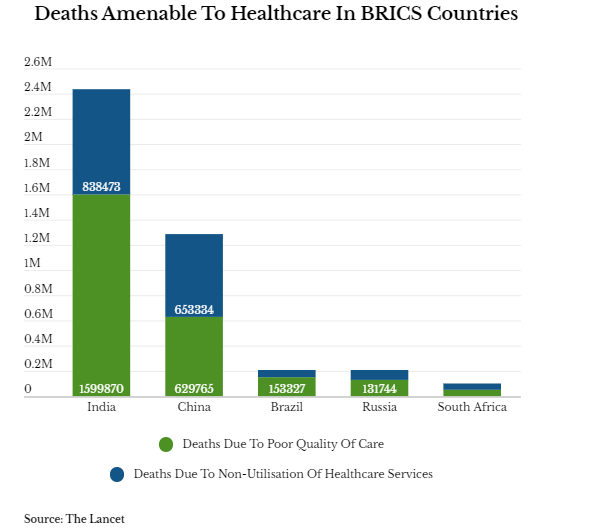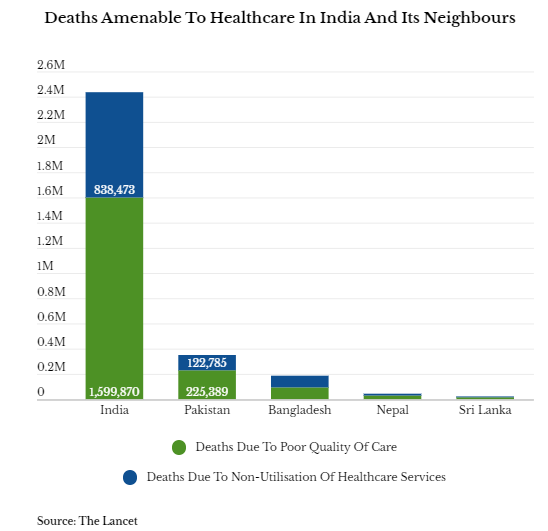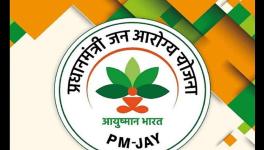Why India’s Health Care Systems Fail to Provide for Marginalised Citizens
“Over the years, India has grown to become a top-notch destination for medical value travel because it scores high over a range of factors that determines the overall quality of care. Imagine a complex surgical procedure being done in a world class global hospital by acclaimed medical specialists at a fifth to tenth of what it normally takes! That’s India.”
This is a short description extracted from a medical tourism’s website elucidating why medical tourism is booming in India. As of now, India is one of the world’s leading destinations for medical tourism, and yet it ranks abysmally low in terms of providing basic healthcare facilities to its own citizens. The ongoing COVID-19 pandemic has made it all too plain that access to healthcare in India is determined largely by the deep socio-economic and cultural inequalities in our society. We saw the devastating impact of the first wave of COVID-19 last year; how marginalised sections suffered the brunt of an inadequacy and the unplanned lockdown. A year went by and we now stand at the brink of a deadlier wave. Have we learned anything?
Inequality and COVID-19
Twenty-eight year old Prashik from Gadchiroli district lost his father to a “heart attack” last year – it is what he was told. A bit more digging revealed the cause of death to be a lack of Oxygen at the hospital. The healthcare facilities in Gadchiroli, a tribal district of Maharashtra, failed to provide not just an Oxygen cylinder, but also a timely ambulance ride to where he could find a cylinder.
“I was helpless, and I know that even if I file a complaint against the hospital staff, nobody will take action against them. They are connected among the politically and socially dominant sections," he said.
This is just one among innumerable instances of easily avoidable fatalities that barely make headlines, a fact that rarely bothers anyone. While instances like the mass fatalities of new borns in Gorakhpur due to absence of oxygen cylinders may have stirred the nation briefly, but even such criminal negligence leads to the CM blaming the medical college principal and washing his hands off it.
And when it comes to the tribal heartland of India, our record hits rock bottom. There is no reporting, no one is held accountable, no one even seems to be keeping count. The only starkly visible development indicators in these parts remain the smooth highways that carry minerals. It is all those in corridors of power seem to be interested in.
Just like Prashik's father, Chanda Madavi from Aheri block lost her baby in 2018 due to the unavailability of an ambulance. Again, in Etapally block in 2019, a pregnant woman had to be taken to a hospital from Wasmundi village in a tractor-trolley. Lives in Gadchiroli district have been cheap. COVID-19 has only made apparent what had remained a broken system for decades.
Rakesh from Gadchiroli district said that many Primary Health Centres (PHC’) do not have "basic medicines like Paracetamol and eye drops etc. A large number of doctors are unwilling to work in remote villages." He said local panchayats never monitored the PHCs which are "managed" by politicians; "most health professionals give the excuse of the fear of someone for their negligence in duty.”
"If you visit any of the nearest PHCs after 5 pm you won’t find a single health care professional and most of the patients don’t even get an ambulance for emergency services at night,” he said, adding that the situation was worse in Gadchiroli's deeper-lying areas. “The pitiable condition of public health care has resulted in private hospitals flourishing, but healthcare facilities are getting costlier by the day and are increasingly inaccessible to the poor and marginalised communities,” he added.
According to reports, while 78% of the Indian population resides in rural areas, only two per cent of medical professionals are available in those areas. A second wave and new lockdowns have sent people scurrying for services.
Cost of Poor Care
Almost 122 Indians per 100,000 die due to poor quality of care each year, a Lancent study said, showing up India’s death rate due to poor care quality as worse than that of BRICS countries –Brazil (74), Russia (91), China (46) and South Africa (93) – and even in South Asia – Pakistan (119), Nepal (93), Bangladesh (57) and Sri Lanka (51).


Only access to healthcare is not enough; good quality care is needed for better outcomes, the Lancent report says, citing the example of India’s Janani Suraksha Yojana (Maternal Safety Scheme). Started in 2005, the programme offers cash incentives to encourage women to give birth in health facilities. It has “increased facility delivery but did not measurably reduce maternal or newborn mortality”, the report noted.
An analysis by the Lancet said every year nearly 16 lakh Indians die due to poor quality care; about 4,300 deaths every day due to poor treatment. Out of 86 lakh deaths globally from conditions treatable by health care, poor quality care is responsible for an estimated 50 lakh deaths while the remaining 36 lakh deaths are due to poor access to health care, says the world’s first assessment of the quality of care.
“The underlying argument behind the study is that clinical care is too often simply inadequate in low and middle-income countries. Diagnoses are frequently incorrect and are too speedily made. Care itself is slow. Disrespect towards patients is commonplace. Communication with patients is often poor. And abuse of patients is frequent,” says an accompanying editorial in the journal.
Tribal people have been facing the apathy of the government. The Malkangiri incident saw more than 100 children died due to acute encephalitis syndrome and Japanese Encephalitis between September and December 2016. While the IMR (mortality of kids below a year old per 1000 live births) for Odisha is 41, it is 50 for Malkangiri, far higher than India’s IMR of 32.
Discriminatory Healthcare
We are again witnessing migrant workers leaving cities amid political apathy. Funeral pyres are burning on footpaths and walls are being erected around cremation grounds.The denial of deaths by the government and the silence of the media is on show too. However, the already marginalised pay a much greater price.
A study found that Dalits face differential treatment, more apathy, denial and avoidance by healthcare providers creating barriers to their access to healthcare. Practices of untouchability—like refusal to touch Dalit patients or visit their homes—continue along with reduced time and responsiveness to their health requirements.So, with rural health care already abysmal, even what exists caters to the dominant castes and is defined by the fatal accident of one’s birth.
Indian women suffer gender bias while accessing health care which has a negative impact on women’s health. The reasons are rooted in economic situations or in entrenched values, habits, and traditions of families and society.
Muslims are much more vulnerable to the medical poverty trap and the recent changes in the country have made them more vulnerable than others. Instances like Rajasthan, where a Muslim lady lost her new-born after the doctor refused to admit her because of her religious identity, shows how our society is becoming insensitive.
Oxford University Researchers estimate that at least 260 million people could be pushed into poverty due to the economic fallout by the pandemic. Being one of the worst-affected economies facing one of the severest contractions on the heels of a strict and unplanned lockdown, we have pushed millions into poverty. Already afflicted by malnutrition and hunger, we are looking at a further deterioration of health indices among the poor that would be stretching thin the already inadequate health infrastructure. And by the looks of it, COVID-19 is here to stay, at least for some time.
(The writer is a researcher at the Centre for Equity Studies.The views are personal.)
Get the latest reports & analysis with people's perspective on Protests, movements & deep analytical videos, discussions of the current affairs in your Telegram app. Subscribe to NewsClick's Telegram channel & get Real-Time updates on stories, as they get published on our website.
























